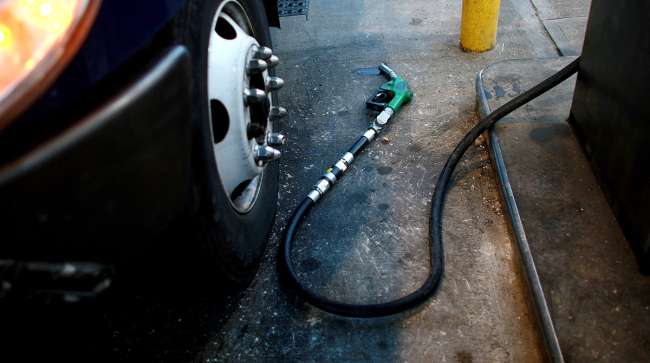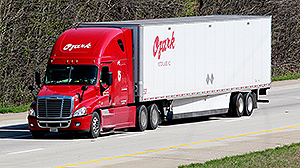Average Price of Diesel Drops 2.9¢ to $3.048 a Gallon

The U.S. average retail price of diesel dropped 2.9 cents to $3.048 a gallon, the U.S. Energy Information Administration reported, as crude oil prices hovered around $45 per barrel.
The data was for the week ending Dec. 31.
The drop in diesel marked the 11th consecutive weekly decline in the cost of trucking’s main fuel. The price has fallen 34.6 cents during that period.
Still, diesel costs 7.5 cents a gallon more than it did a year ago, when the price was $2.973, EIA reported.
Average diesel prices fell in all regions of the country, led by the Rocky Mountain region, where per-gallon costs dropped 3.9 cents to $3.071.
The smallest drop was 0.3 cent a gallon, in New England.
Meanwhile, the average national gasoline price fell 5.5 cents to $2.266 per gallon.
The biggest regional drop for gasoline was in the Midwest, where prices fell by 7.6 cents, dropping to $2.005, according to EIA.
The national average price is 25.4 cents lower than one year ago.
As 2019 kicked off, oil started the year with another price slide, down 1.6%, as weaker Chinese manufacturing data pointed to slowing demand in the world’s second-biggest consumer of the fuel and to growing risks of a global crude surplus, Bloomberg News reported.
Though both New York and London crude benchmarks rallied in the last days of 2018, they each lost 20% or more during the year on expectations that booming U.S. shale output could unleash a new glut, according to Bloomberg.
Do you think it’s just luck that gas prices are so low, and falling? Low gas prices are like another Tax Cut! — Donald J. Trump (@realDonaldTrump) January 1, 2019
Warning lights in the global economy are only compounding expectations that there will be more oil supply than needed this year, Bloomberg reported. But to President Donald Trump, it’s good for consumers. Trump tweeted on New Year’s Day that gasoline prices are low and are expected to fall this year, likening the drop to a tax cut, and more money in the pockets of consumers and businesses.
At fleets across the nation, managing mileage is key even with lower prices and more revenue found in smaller fuel costs.
Glen McDonald at Ozark Motor Lines Inc. manages 700 trucks. The company’s territory is Dallas to Chicago and many places east of the Mississippi River. All trucks use diesel.
To McDonald, the best strategy is to upgrade trucks to the most fuel-efficient.
“We’re trying to give the drivers the most fuel-efficient trucks we can find,” said McDonald.

Ozark Motor Lines manages 700 trucks. (John Sommers II for Transport Topics)
Ozark uses mostly Freightliner models. They average a little more than 7 mpg, McDonald said.
But in the cold season, when winter mandates cause diesel fuel to be blended differently, “(miles per gallon) takes a hit.”
Not all analysts are convinced a slowdown will happen in 2019. Economic jitters about the federal government shutdown are overstated, said Phil Flynn, an analyst with the Price Futures Group of Chicago. The partial government shutdown entered its 13th day on Jan. 3.
Flynn said he expects oil inventories will decline as OPEC and Russia decrease production. Some analysts believe shale will offset that, but Flynn pointed to reports that U.S. oil production from shale fields has been overstated.
Declines in U.S. manufacturing could also lead to a big decrease for oil, and relieve pressure on inventories. On Jan. 3, a gauge of U.S. manufacturing plunged by the most since the 2008 recession a day after Apple Inc. cut its revenue outlook, fueling concern that the trade war with China is taking a bigger-than-expected toll on economic growth, according to Bloomberg.
The Institute for Supply Management index dropped to 54.1 in December from 59.3 in November, the lowest since November 2016. Anything above 50 signals growth.

